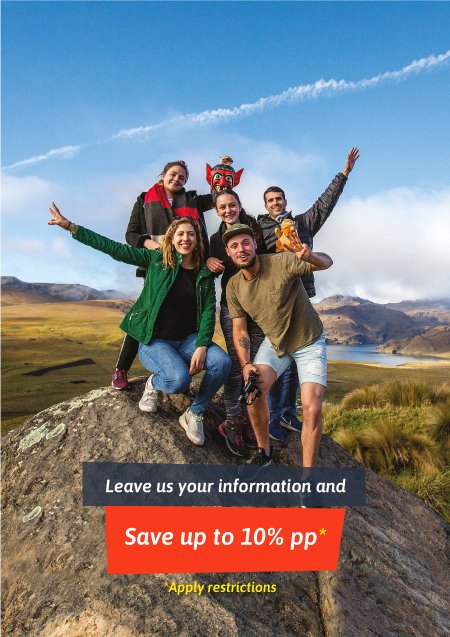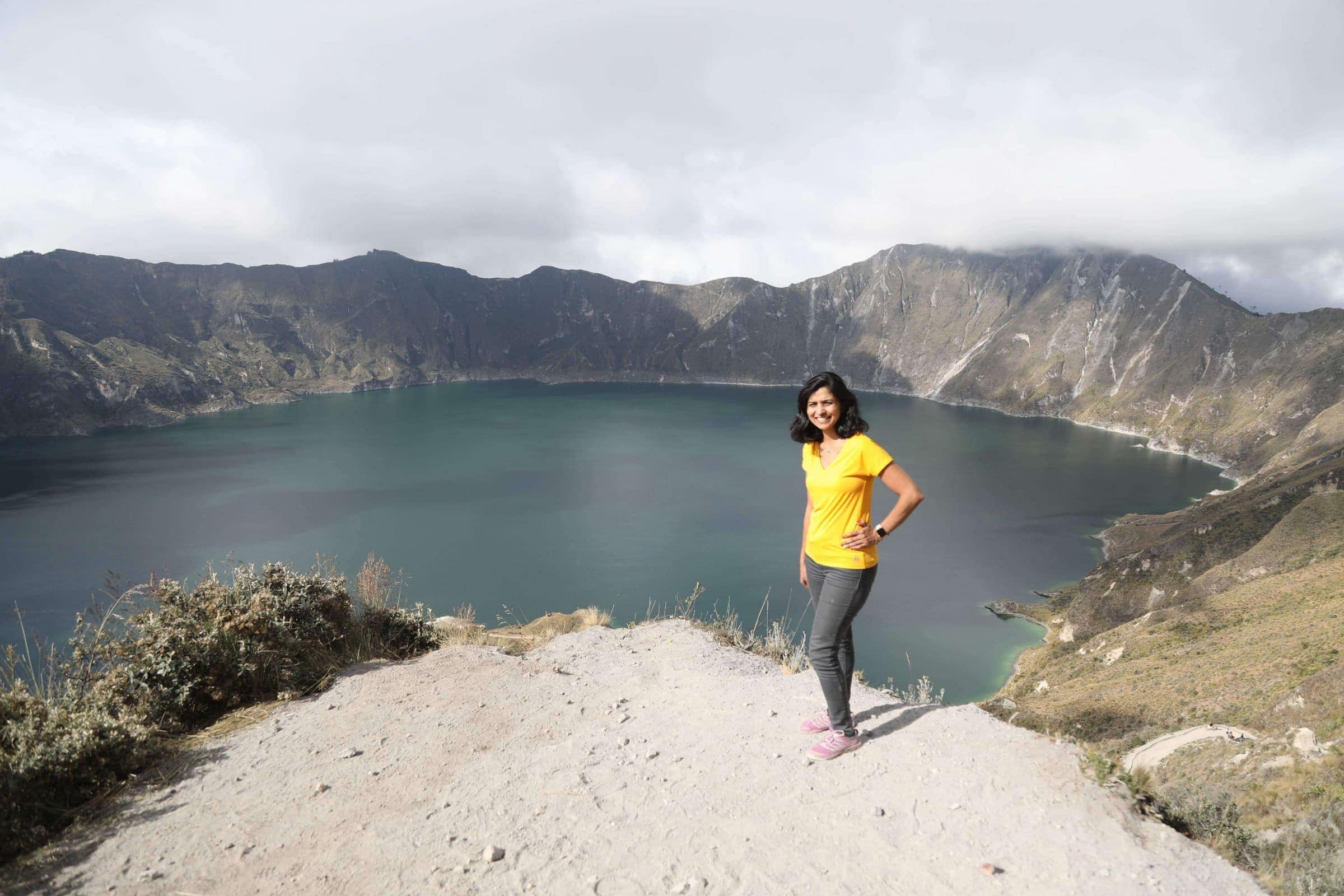Wondering how to arrive to Cotopaxi? If a visit to Volcano Cotopaxi isn’t on your bucket list, it should be! As one of the most impressive mountains in Ecuador, which also happens to be an active volcano, you won’t regret dedicating at least one full day to this expedition. In the following blog, we’ll tell you just how to travel from Quito to Cotopaxi, what you can do there and where to go next.
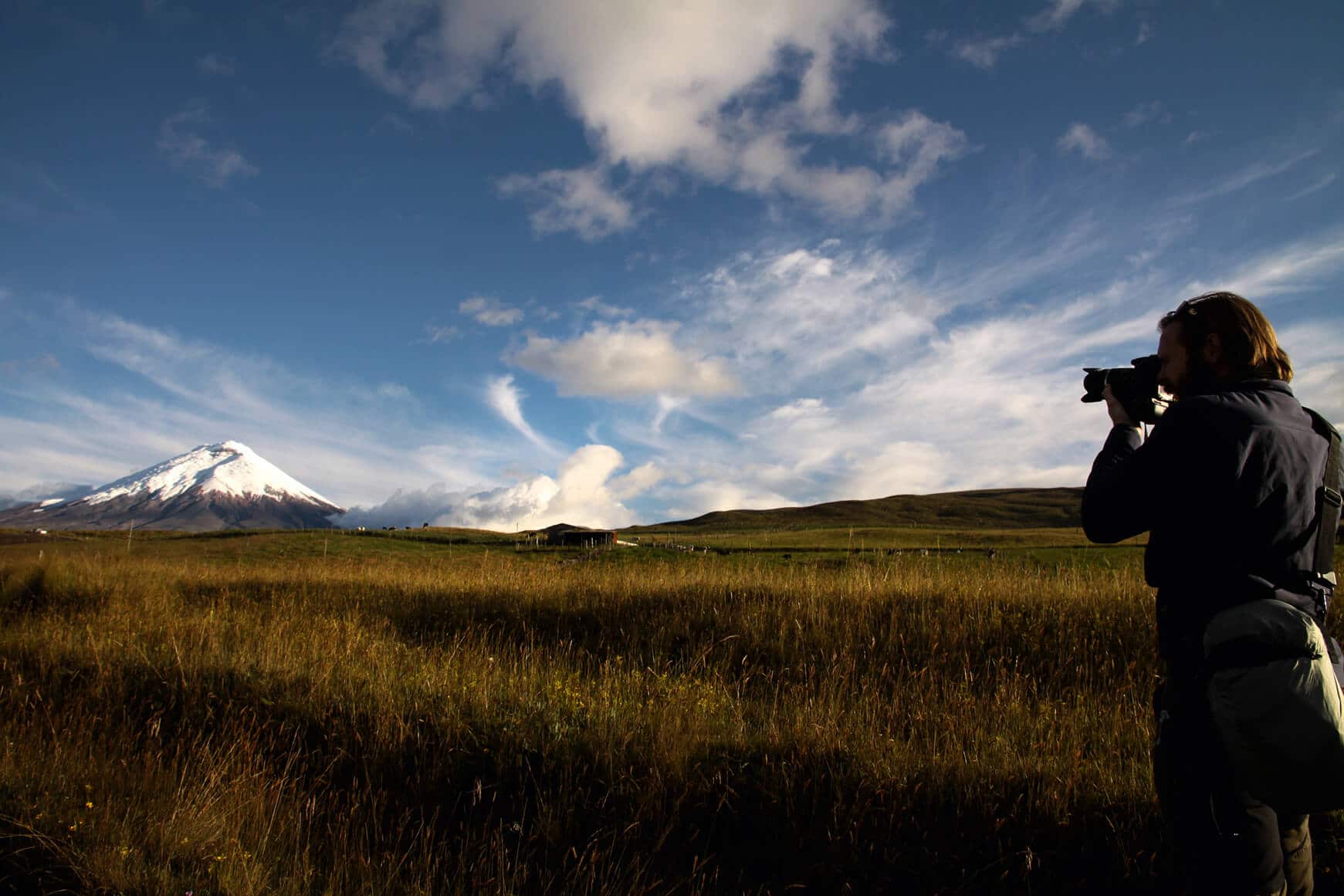
What and where is Cotopaxi?
Cotopaxi is a beautifully snow capped 5,897-meter (19,347 ft) active volcano, which last erupted in 2015. It is the second highest summit in Ecuador and, on a clear day, it’s visible from Quito, Latacunga, and other cities. The first time you spot it, you won’t help but wonder how to arrive to Cotopaxi.
The volcano is located within the Parque Nacional Cotopaxi, where visitors can camp, climb, mountain bike, and horseback ride through the high-altitude landscape. The park itself encompasses an area of 333.9 km² (207.5 m²) and is home to wild horses, the Andean condor, and numerous bird species that can be spotted at Laguna Limpiopungo.
Bus, the best way to travel from Quito to Cotopaxi
There are many day tours that will take you to Cotopaxi National Park and up to the José F. Ribas Refuge, located at 4,800 m (15,750 ft). If you’re a more experienced climber, there are even tours that will take you straight up to the Cotopaxi summit, which you’re required to do with a local guide.
However, if you prefer to go at your own pace as you explore the park, you might want to consider going to Cotopaxi by regular bus or the Wanderbus.
Taking a regular bus is definitely the cheapest mode of travel, though it comes with its inconveniences, as you’ll see below.
From Quito, make your way south to the Quitumbe bus terminal (“Terminal Terrestre Quitumbe”) and hop on a bus headed to Latacunga. To get to Quitumbe, either take the Trole ($0.25) or a taxi ($10-20, depending on the hour). From Quitumbe, buses leave frequently to Latacunga and you won’t have to wait long to get moving. The ticket should only cost you $2 per person.
Notify the bus driver upon embarking that you’re headed to Cotopaxi National Park. This is important because you’ll need to get off the bus at the “Control Caspi”, before arriving at Latacunga. If you’ve never done the trip before, you won’t know when to get off the bus and will likely miss your stop.
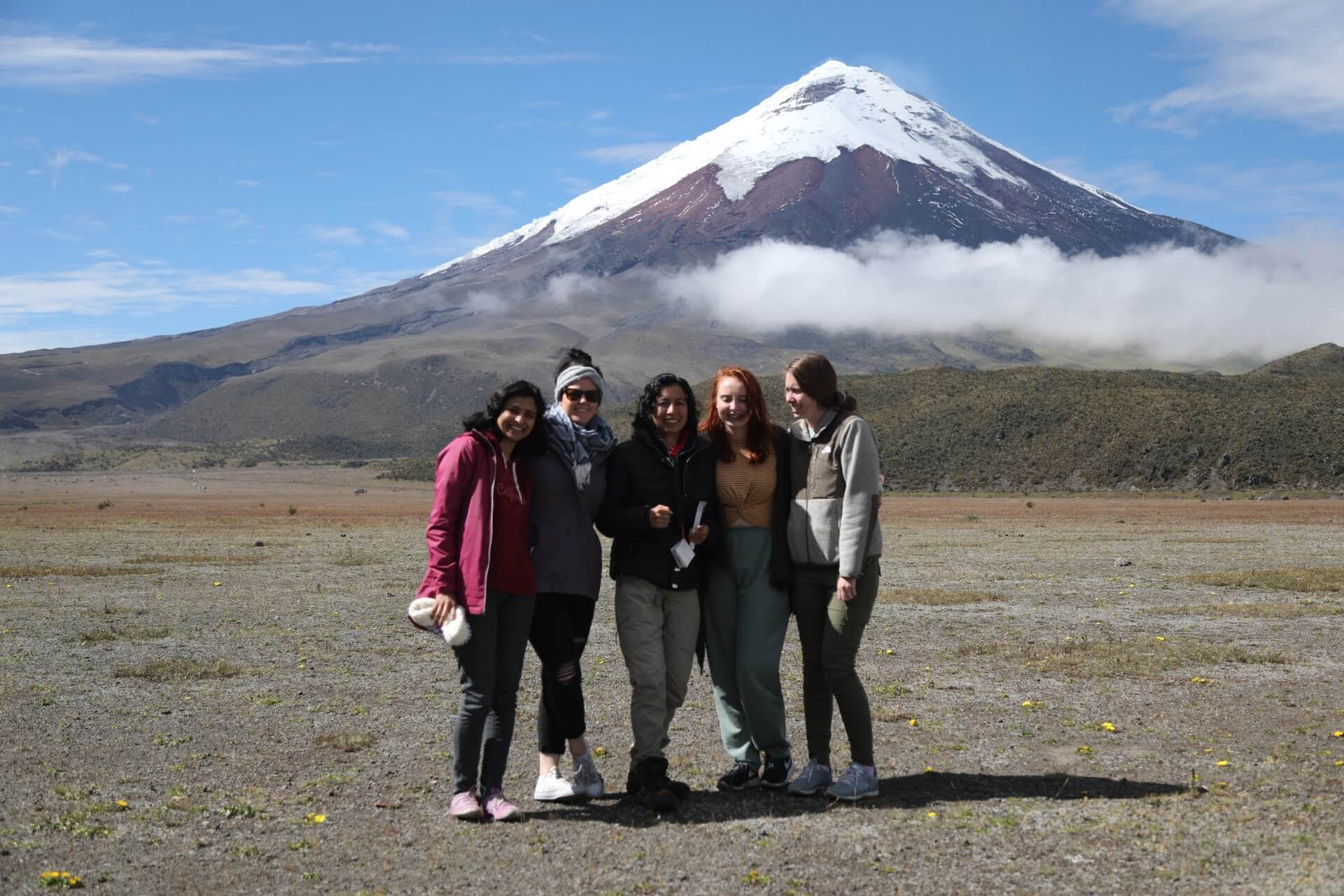
You’re not done yet! Once you get off at Control Caspi, you can either hitchhike or flag down a pick up truck (or taxi) that will take you to the main entrance of the park*, which is 15 km (9 miles) away from the highway. Depending on who you flag down, this leg may cost you $30. You should have a photo I.D. with you since park rangers are required to register all visitors for safety reasons.
Alternatively, you can get to Cotopaxi National Park on the Wanderbus, which is more convenient because it takes you directly into the park itself. From Quito, the Wanderbus will pick you up from convenient locations in town or from these hotels, specifically.
Another advantage to taking the Wanderbus is that, if you decide you want to spend the night in Cotopaxi to hike some more the next day, or go horseback riding, you can simply hop off the Wanderbus and then hop back on when it comes around the Park in the following days. Depending on the pass you purchase, you can also visit other nearby sights, like Quilotoa, and continue on to Baños, if that’s on your itinerary.
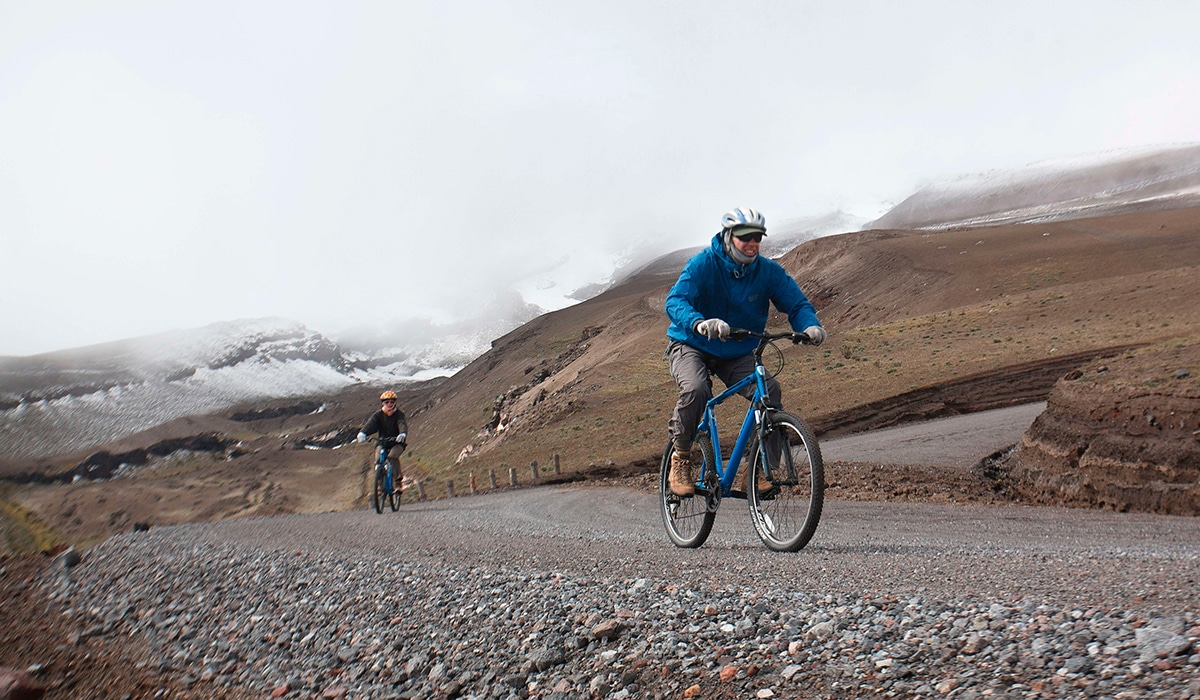
What can I do in Cotopaxi National Park?
Though the main attraction in Cotopaxi National Park is, of course, the towering Cotopaxi Volcano, there are numerous activities you can do within the park.
Among these include horseback riding, which can be organized from Tambopaxi Lodge. The rides can go from just a few hours to full day rides, taking you to some of the farthest corners of the park where you’ll see stunning landscapes and hopefully spot a few Andean condors.
Mountain biking is another popular activity in Cotopaxi. Day tours can be organized from Quito and a crash course (which hopefully doesn’t result in crashes) is provided for beginners.
As exciting as horseback riding and mountain biking can be, my favorite activity is to explore the park on foot along the trails to the northeast of the volcano. You might even come across some of the ruins specified on this map.
Where should I go after visiting Cotopaxi?
One approach to getting to know the area in the Northern Ecuadorian Andes is by calling Quito homebase and taking day trips to the surrounding areas. Since Cotopaxi National Park is essentially right outside of Quito, it’s an easy day trip and you can simply come back to the capital to prepare for your next trip the following day.
Alternatively, you can continue south from Cotopaxi and visit the following areas:
Quilotoa Crater
Is about 3.5 hours away from Cotopaxi National Park, heading south. It’s another top destination in the Ecuadorian Andes region because of the spectacular view from the top of the crater, looking over the lake within and the surrounding mountains. There are a number of hikes you can do in this area, including the Quilotoa Loop. All of this is still relatively high-altitude, so if altitude sickness is affecting you, you might want to head for lower spots, like Baños.
Baños
Is also about 3.5 hours from Cotopaxi National Park, but is wildly different from Cotopaxi and Quilotoa. On the way to Baños, the elevation drops significantly, resulting in a warmer and more tropical environment. Baños is known as the adventure capital of Ecuador, and while you’re there you should take advantage of the zipline and river rafting tours, offered at very affordable rates. Most people that visit Baños end up staying a few extra nights!
Riobamba
This picturesque high-altitude city along the Ecuadorian Sierra, south of Cotopaxi and Baños, is surrounded by mountains, some of which you can see from the city itself, like Chimborazo. Other mountains include Tungurahua, Altar, and Carihuairazo. From Riobamba you can visit indigenous handicraft markets and experience another facet of Andean culture.
All of the above locations can be reached if you travel with the Wanderpass, which loops around all of Ecuador, stopping through its top destinations. Since it’s a hop-on hop-off system, you can decide to stay longer at any stop and simply wait for the next bus in the coming days.
Hopefully you know a bit more about the best ways to arrive to Cotopaxi Volcano and National Park! If you have specific questions, please get in touch by commenting below.
Happy Wandering.
